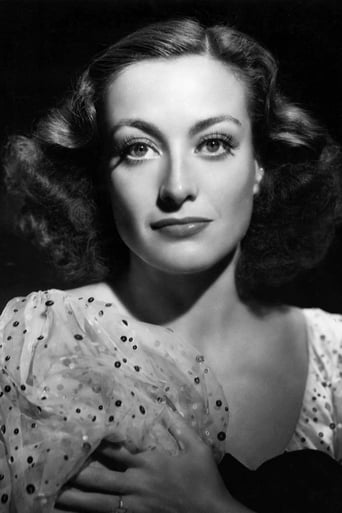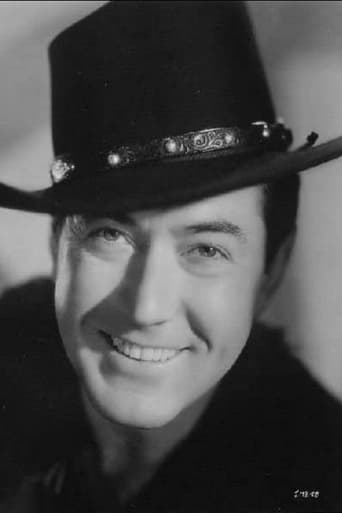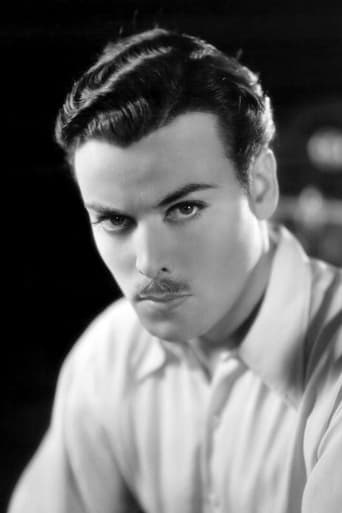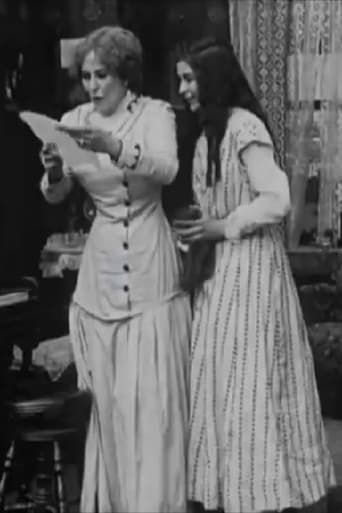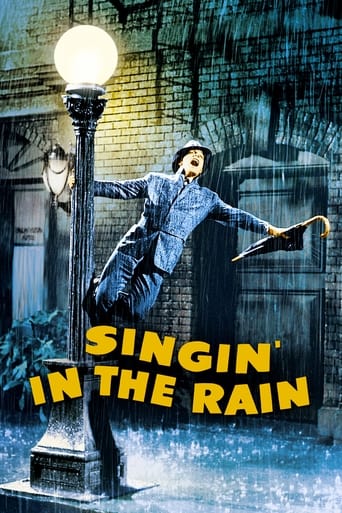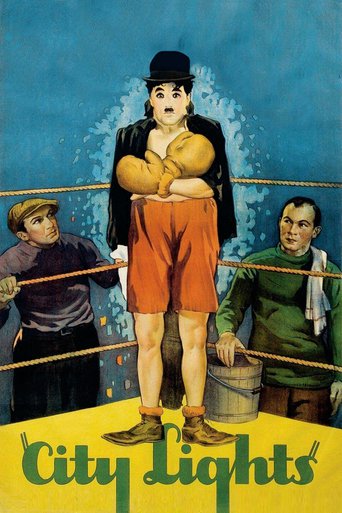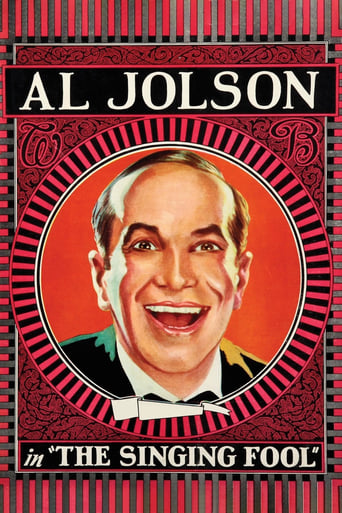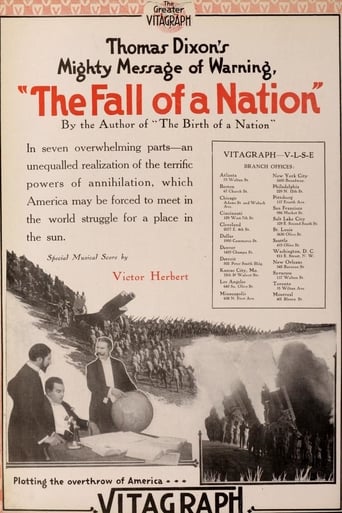
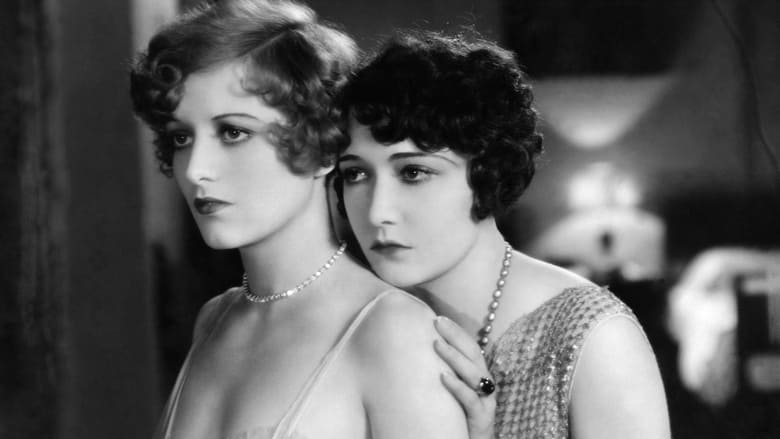
Our Dancing Daughters (1928)
A flapper sets her hat for a man with a hard-drinking wife.
Watch Trailer
Cast


Similar titles
Reviews
Copyright 1 September 1928 by William Randolph Hearst's Cosmopolitan Productions. Released through Metro-Goldwyn-Mayer. New York opening at the Capitol: 7 October 1928. U.S. release: 1 September 1928. 9 reels. 7,652 feet. 85 minutes.SYNOPSIS: Diana Medford, a vivacious, high-spirited girl, falls in love with a young, handsome millionaire. Unfortunately, she has competition. COMMENT: Oddly, this one is a triumph for Anita Page. She just creams the rest of the cast. True, Joan Crawford is absolutely delightful as the dancing Diana, but acting-wise she has little to do other than look vampish or soulful. Miss Page has by far the showiest role and she makes the most of it. Wise girl! She had another great opportunity to show what she was made of in Broadway Melody, but then she fell foul of Hollywood politics and was pushed aside. Dorothy Sebastian also registers strongly here as the appealing Beatrice, but the men are a complete wash-out. The worst are surly Asther, overly exuberant Nugent and two-expressions Brown (smile on, smile off). Production values, fortunately, are agreeably lavish. As with Our Blushing Brides, the DVD is currently only available from Warner. A silent film, the movie was originally issued with a continuous music sound track and occasional sound effects.
Our Dancing Daughters (1928)Listed as a "silent" movie but actually an early synched-score movie with intertitles, and it's a really good one. If you think a dance and music movie can't be silent, check this out. Yes, it's 1928, less than a year after "The Jazz Singer," but we see a full blown plot about infidelity, some pretty terrific photography, and dancing like only 1928 can offer.The star is the ever self-aware Joan Crawford.But there is a whole slew of beautiful "girls" on hand here, daughters all of them, and parents with different kinds of acceptance and worry. All these young women are going out to party hard, and some disguise their intentions and others just let loose. There are lots of scenes for the men in the audience—women dressed in as little as possible for the times (which was quite little, before the 1934 Code) and lots of legs and bright faces and big eyes. That of course is also the downfall of what is a pretty amazing movie, filled with crazy fun dancing. Crawford was famous for her dancing (she won lots of trophies going out to local competitions—and I mean Crawford, not any character). We see it here. She's the wildest of the women (she tells one suitor she is "Diana the Dangerous"), and one parent even bemoans that their sweet girl is cavorting with the likes of such a wild one.But what else does this movie offer? Great question. I think it might be about courtship, or falling into superficial love, or maybe just how to snake a rich due with some lifted gauzy skirts. The men don't have much to offer, or show—they are fully clad in expensive tux-like suits. Alas. It's worth saying, as a photographer, that the visuals are really nice even if the camera is often stuck to a tripod. The use of very shallow focus (allowing for great soft backgrounds behind the sharp foreground figures), and the atmospherics of the place (the rocky coast, or the rainy day) are great. This is no German Expressionist film— nothing that remarkable—but George Barnes does what the film needs really nicely. (He did Hitchcock's "Rebecca," to give you an idea of his talent.) You have to see it with this in mind to get it, and then you'll see what I mean, especially the very very careful shallow focus.In the end this is all about boy meets girl and the matchmaking and the engagements and the cheating. It's a fast ride, and if not especially deep or complex, it's fun and wonderfully immoral. I'll say, if you don't like silent movies you should skip this, I think. There are too many silent movie qualities here (like some of the exaggerated reactions, and the stiff over-telling of the story) to keep you going unless you are used to it. But there is a lot of the fun 1920s stuff here if you are prepared for the style. I liked it more than I expected, and some of it even made me wistful and appreciative.
This film was the first in a trilogy - Our Dancing Daughters/Our Modern Maidens (1929)/Our Blushing Brides (1930). The first two were silent with Vitaphone sound effects, the last was a talkie. Joan Crawford had gotten good reviews and got noticed in her earlier MGM roles from 1925 to 1928, giving good performances even in some of the dog pictures MGM starred her in. This film is what made her a star. She literally steps into the role of Diana and makes it her own. From the first scene she IS this energetic and honest flapper.This movie could just as well be accurately retitled as "The Stupidity of Men, The Suffering of Women". The story centers around three flappers - Beatrice (Dorothy Sebastian), Ann (Anita Page), and Diana (Joan Crawford). Bea is in love with Norman (Nils Asther), but she has a past with other men that she tells Norman about when he proposes. He says it doesn't matter, but then after their marriage Norman insists that the couple live in virtual isolation as Norman is so sure that one of the men in Bea's past is part of "their crowd" and is laughing at him. Diana meets the wealthy and handsome Ben Blaine (Johnny Mack Brown) at a party and they hit it off and fall in love. However, Ben has second thoughts about marrying Diana because she is so upfront about her love of the nightlife. It gets Ben's wheels turning, wondering if Diana admits to A - her love of the nightlife, she has to be guilty of A + B, with B being, of course, wild sexual values. All of this waffling has Ben turning to Ann, a girl whose mother has taught her a maxim to live by - "A rich man wants his money's worth - beauty and purity". Ann is a master saleswoman and sells Ben on her having both virtues, and thus he picks her as a bride. This is a decision that breaks Diana's heart and that Ben comes to regret, because Ann has her own maxim about how to behave once she's married - "Once I'm married, boy am I going to have a fling". That she does.Joan Crawford takes center stage here of course, but I couldn't help be captivated by Anita Page's performance too. At the time this film was made, Page had just turned eighteen, yet she seems to grasp all the hypocrisy and sophistication her role demands. Crawford's career was rightfully long. In contrast, Page's career was woefully cut short by MGM studio politics. A highly recommended film from the late silent era.
Our Dancing Daughters is a beautiful example of how far the silent cinema had come by 1928, the year it decisively decided to give itself up to talk. The medium had reached a point where the action was silent but synchronized to a score and embellished with occasional sound effects such as knocking on doors, ringing of phones or a spoken word here and there. It was the short-lived pinnacle of a dying art form. These feature films from the late silent period provide valuable insight for composers who are supplying music for previously unscored silents. This solidly constructed and well-shot story follows the trajectories of three young females of differing temperaments living through various stages of being young and wild in the roaring twenties. We have Diana Medford (Joan Crawford), a straightforward, unashamedly pleasure-loving, self-absorbed but basically decent sort who lives to dance and generally party around. Then there is the more serious and experienced Beatrice (Dorothy Sebastian), whose fiancé (Nils Asther) chooses to overlook her wayward past as long as she will marry him and retreat from the party circuit. Finally there is Ann (Anita Page), a coldhearted golddigger who lures the dashing millionaire Ben Blaine (John Mack Brown) away from Diana by pretending to be an innocent maiden simply yearning for marriage and motherhood. At first it seems as if Diana is a hellcat, but her splashy demeanor is merely the honest excess of youth. Life has its knocks prepared for her and she has to take them, which she does nobly and sportingly. Not Ann. She turns to drink, with disastrous results. Each of the three main characters is introduced by shots of their legs and feet: Crawford's slipping into heels to shimmy in front of a mirror; Sebastian's planted firmly next to her fiancé's as they attentively listen to a pre-date lecture by her parents; Page's seen while seated on the floor, removing a pair of ripped silk stockings, preparatory to stealing a pair of from her mother.The soundtrack is made up of a small number of musical compositions from the period, repeated throughout the film. There are up-tempo dance numbers for the party scenes and slow ballads for the one-on-one romantic clinches. The photography is uniformly beautiful with generous use of medium close-ups, all against the backdrop of sumptuous sets designed by Cedric Gibbons. Great looking costumes too.Crawford and Page are both stunning embodiments of the light and dark sides of "the flapper." Sebastian's role is less flashy. None of the performances is dated.Most documentaries that deal at any length with "roaring twenties," the Great Depression or the Golden Age of Hollywood inevitably include a bit from this film, usually the party where balloons fill the air as Crawford dances exuberantly on a table top.


